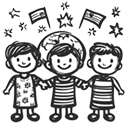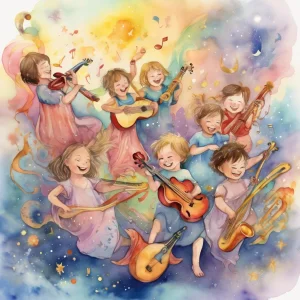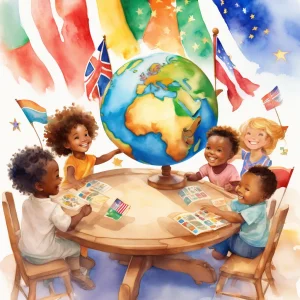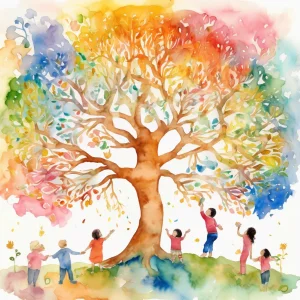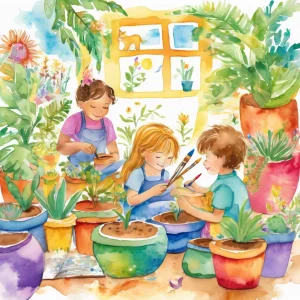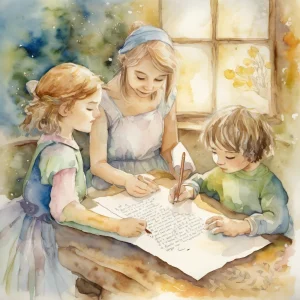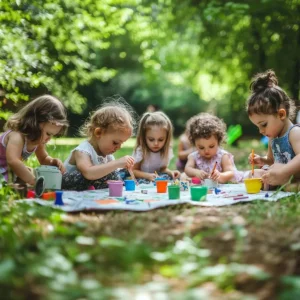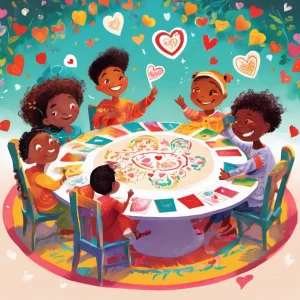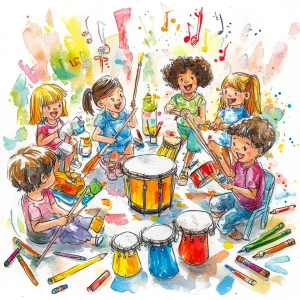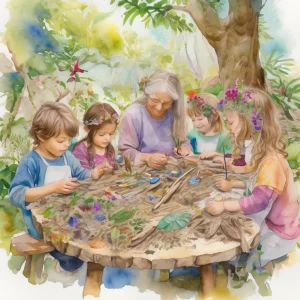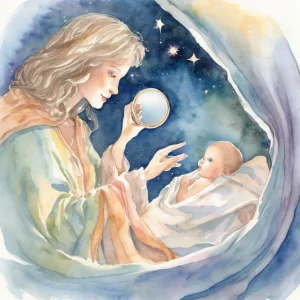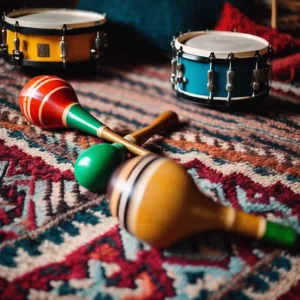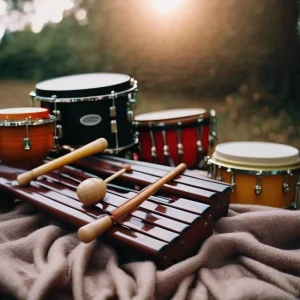Activity
Similar Activities
Enchanted Musical Storytime Adventure: A Journey Through Sound
Children’s Age: 2–3 years
Activity Duration: 10 minutes
"Musical Storytime Adventure" is a delightful activity designed for children aged 24 to 36 months to enjoy a fun and educational experience. Set up by gathering picture books and c…
Activity Duration: 10 minutes
World Wonders: Around the World Dance Party
Children’s Age: 2–3 years
Activity Duration: 15 minutes
Introduce children aged 24 to 36 months to different cultures with the "Around the World Dance Party" activity. Set up a dancing space with world music and optional props like scar…
Activity Duration: 15 minutes
World Wonders: Around the World Ball Game
Children’s Age: 2–2.5 years
Activity Duration: 5 – 10 minutes
Explore the world with the "Around the World Ball Game," perfect for children aged 24 to 30 months. This fun activity enhances gross motor skills and cultural awareness by passing …
Activity Duration: 5 – 10 minutes
Family Roots: The Family Tree Finger Painting
Children’s Age: 3–4 years
Activity Duration: 10 – 15 minutes
The Family Tree Finger Painting activity is tailored for children aged 36 to 48 months, nurturing self-regulation and language skills while exploring family bonds and social connec…
Activity Duration: 10 – 15 minutes
Animal-Inspired Plant Pots: Creative Nature Creations
Children’s Age: 3–6 years
Activity Duration: 20 minutes
Children will have a blast making animal-inspired plant pots, sparking creativity while learning about nature. Gather supplies like paint, pots, seeds, and soil to set up a creativ…
Activity Duration: 20 minutes
Gratitude Journey: Writing Thank-You Notes Experiment
Children’s Age: 6–8 years
Activity Duration: 10 – 20 minutes
A creative activity for children aged 7-8 to write thank-you notes, enhancing cognitive and communication skills.
Activity Duration: 10 – 20 minutes
Space Collage Adventure: Crafting Cosmic Creativity Journey
Children’s Age: 3–8 years
Activity Duration: 10 – 20 minutes
Embark on a Space Collage Adventure where you can make cool space scenes using paper, scissors, and glue. Learn about space while creating your own unique collages with markers and…
Activity Duration: 10 – 20 minutes
Outdoor Tea Party and Fix-it Fun for Toddlers
Children’s Age: 2–4 years
Activity Duration: 10 – 25 minutes
Let's create a fun Outdoor Tea Party and Fix-it Station for kids aged 1 to 3. Set up a table and chairs, play tea set, pretend tools, household items for fixing, a picnic blanket, …
Activity Duration: 10 – 25 minutes
Creating Empathy Cards Through Art for Kids
Children’s Age: 3–6 years
Activity Duration: 5 – 20 minutes
In the Empathy Building Art Project, children aged 3 to 6 get to be creative while learning about empathy. You will need paper, crayons, markers, stickers, glue, and scissors. Set …
Activity Duration: 5 – 20 minutes
Empathy Through Storytelling: Musical Sensory Experience
Children’s Age: 2–3 years
Activity Duration: 5 – 15 minutes
Let's dive into Musical Sensory Storytime! Get ready for a fun experience that will engage all your senses. We will read a story, play musical instruments, create art, and enjoy co…
Activity Duration: 5 – 15 minutes
Enchanted Garden: Nature Sculpture Garden Adventure
Children’s Age: 4–6 years
Activity Duration: 10 – 25 minutes
Engage children aged 48 to 72 months in the "Nature Sculpture Garden" activity, promoting creativity and empathy. Using natural materials like sticks and leaves, along with clay an…
Activity Duration: 10 – 25 minutes
Enchanted Reflections: Peek-a-Boo Mirror Play
Children’s Age: 6 months – 1 year
Activity Duration: 5 minutes
"Peek-a-Boo Mirror Play" is a wonderful activity designed for infants aged 6 to 12 months, focusing on language development and self-awareness. With a handheld mirror and a soft bl…
Activity Duration: 5 minutes


